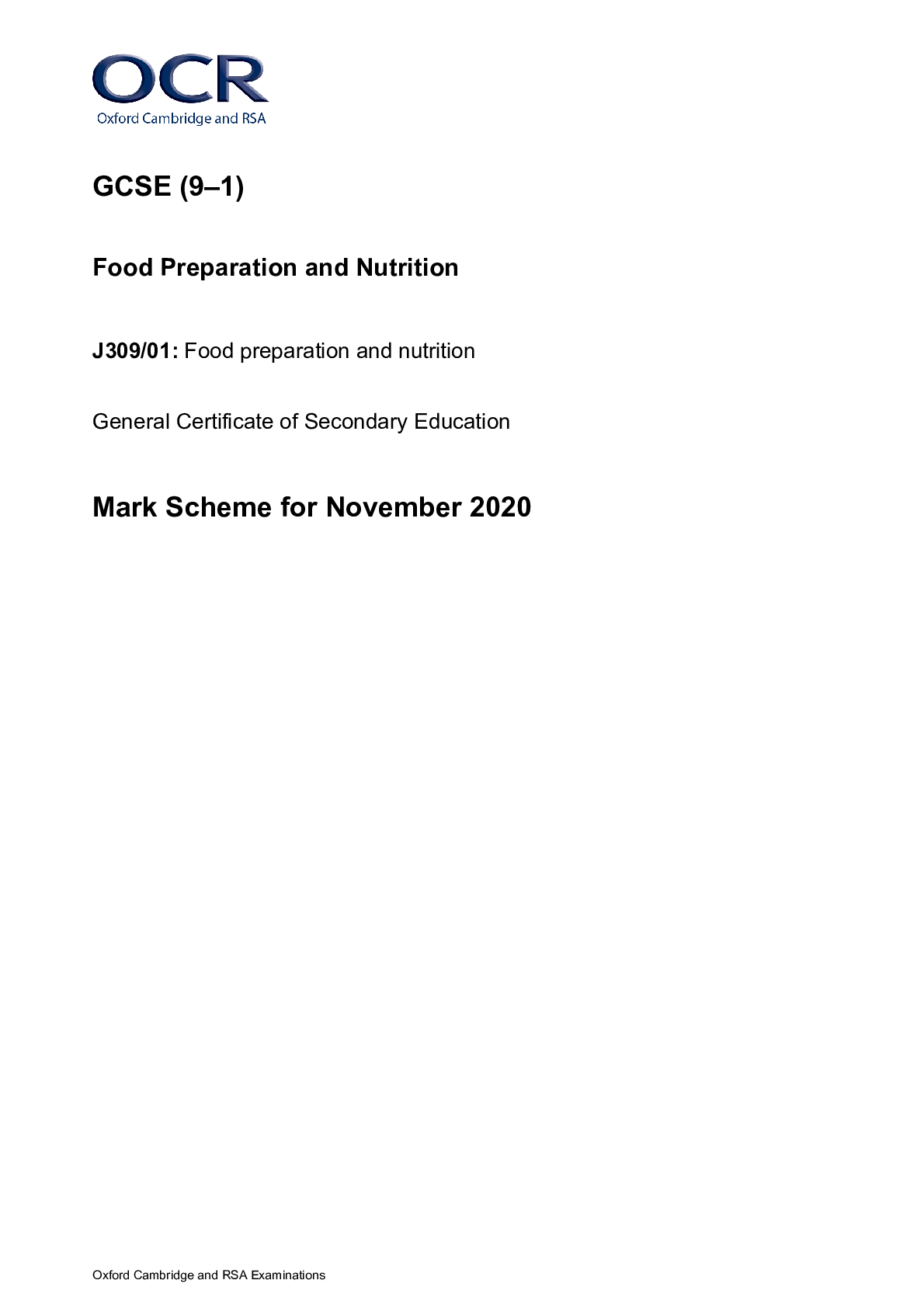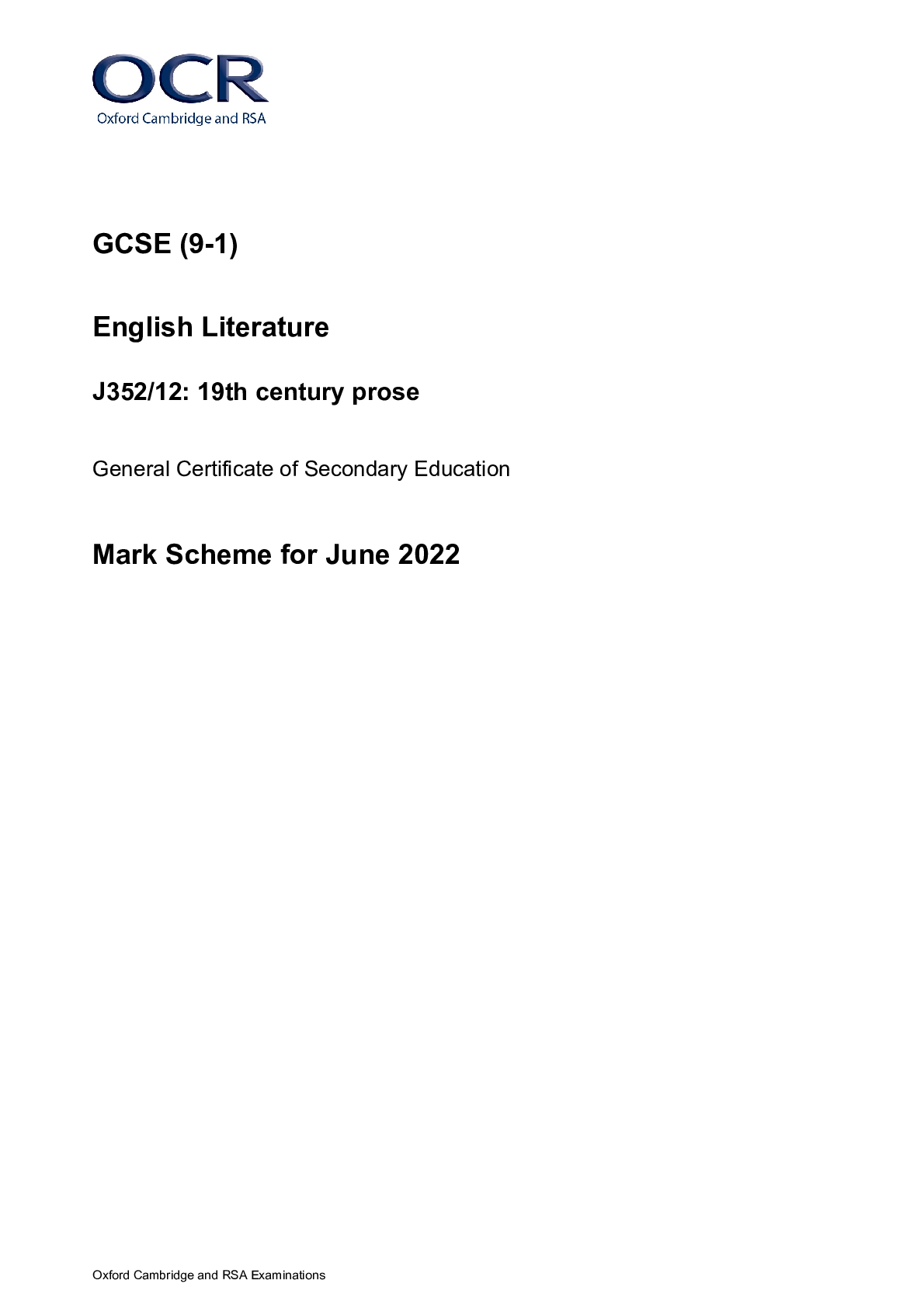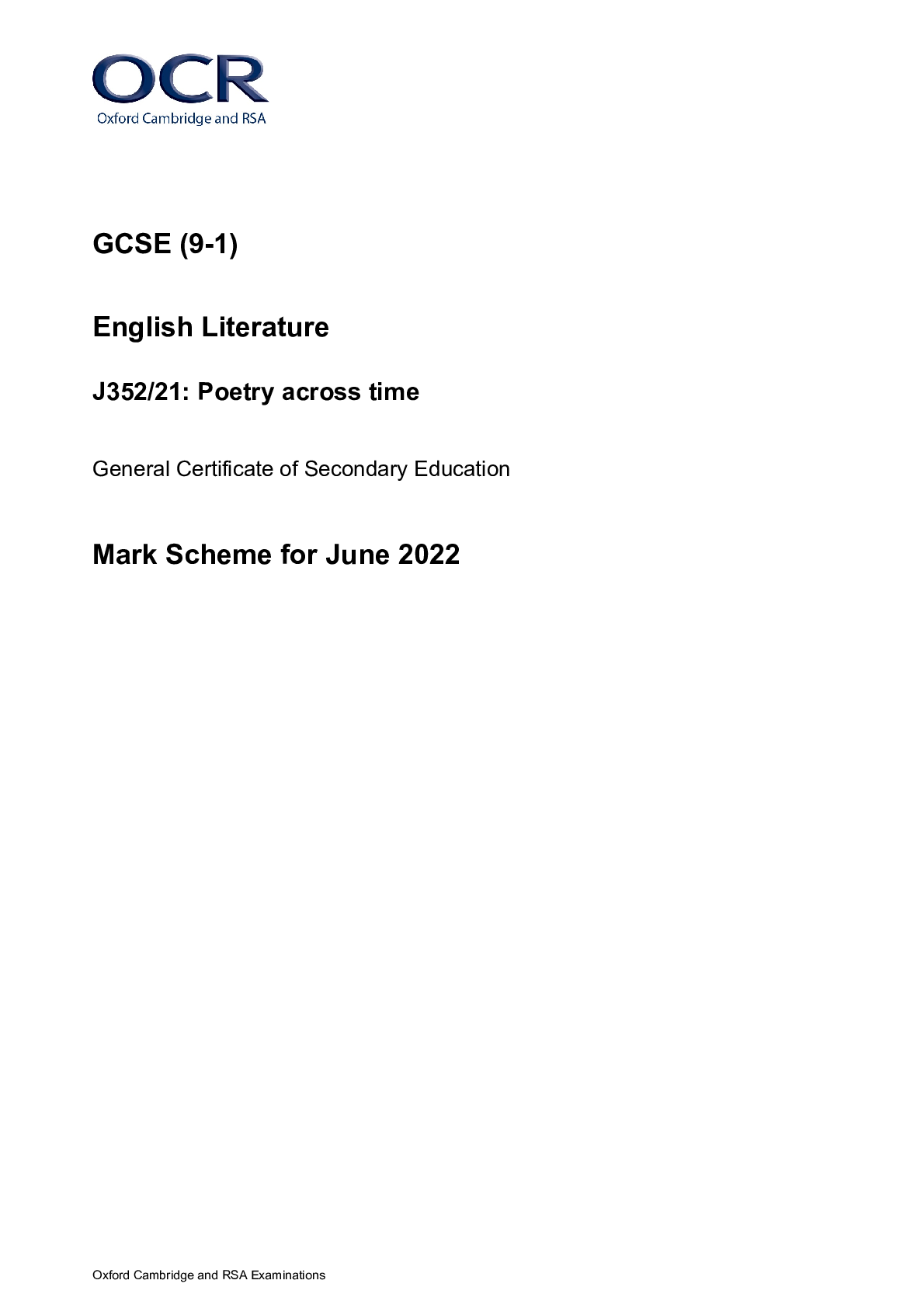Nutrition > GCSE MARK SCHEME > GCSE (9–1) Food Preparation and Nutrition J309/01: Food preparation and nutrition General Certific (All)
GCSE (9–1) Food Preparation and Nutrition J309/01: Food preparation and nutrition General Certificate of Secondary Education Mark Scheme for November 2020
Document Content and Description Below
GCSE (9–1) Food Preparation and Nutrition J309/01: Food preparation and nutrition General Certificate of Secondary Education Mark Scheme for November 2020 Oxford Cambridge and RSA Examinations GCS... E (9–1) Food Preparation and Nutrition J309/01: Food preparation and nutrition General Certificate of Secondary Education Mark Scheme for November 2020Oxford Cambridge and RSA Examinations OCR (Oxford Cambridge and RSA) is a leading UK awarding body, providing a wide range of qualifications to meet the needs of candidates of all ages and abilities. OCR qualifications include AS/A Levels, Diplomas, GCSEs, Cambridge Nationals, Cambridge Technicals, Functional Skills, Key Skills, Entry Level qualifications, NVQs and vocational qualifications in areas such as IT, business, languages, teaching/training, administration and secretarial skills. It is also responsible for developing new specifications to meet national requirements and the needs of students and teachers. OCR is a not-for-profit organisation; any surplus made is invested back into the establishment to help towards the development of qualifications and support, which keep pace with the changing needs of today’s society. This mark scheme is published as an aid to teachers and students, to indicate the requirements of the examination. It shows the basis on which marks were awarded by examiners. It does not indicate the details of the discussions which took place at an examiners’ meeting before marking commenced. All examiners are instructed that alternative correct answers and unexpected approaches in candidates’ scripts must be given marks that fairly reflect the relevant knowledge and skills demonstrated. Mark schemes should be read in conjunction with the published question papers and the report on the examination. © OCR 2020J309/01 Mark Scheme November 2020 2 Annotations Annotation Meaning Level 1 Level 2 Level 3 Noted but no credit given Tick BP Blank page Repeat Unclear Benefit of the doubt Incorrect/No credit givenJ309/01 Mark Scheme November 2020 4 Question Answer Mark Guidance 1 (a) (i) • Meat • Meat products e.g. pies, sausages • Lard • Suet • Dairy products e.g. milk, butter, cheese, cream • Oily fish e.g. salmon, tuna, sardines Accept any other correct sources of animal fat 2 2x1 Do not accept: Repeats e.g. two meats, two oily fish 1 (a) (ii) • Avocado • Olives • Nuts e.g. almonds, walnuts • Seeds • Oils/named vegetable oil • Margarine • Vegetable fat spreads e.g. Flora Accept any other correct sources of vegetable fat 2 2x1 Do not accept: Repeats e.g. two nuts, two oils 1 (b) • Energy source • Form part of the structure of cells • Help insulate the body as stored under the skin • Protect organs( e.g. kidneys) • Source of fat soluble vitamins A,D,E,K • Promotes the feeling of satiety (feeling full) 3 3x1 1 (c) Cardiovascular disease • Blood flow to the heart, brain or body reduced because of a blood clot or narrowing of the arteries Obesity • Fat is stored under the skin, extra weight being carried puts strain on the body Coronary heart disease • When arteries become blocked by a blood clot or plaque build up 4 2x2 1 mark for correct health issue 1 mark for explanationJ309/01 Mark Scheme November 2020 5 High cholesterol • A substance made by the liver and carried in the bloodstream. When builds up can be deposited as plaque on the arteries causing them to narrow Question Answer Mark Guidance 1 (d) (i) • When the fat is rubbed in it coats the grains of flour providing a waterproof layer that prevents the gluten developing (1). This ensures the pastry has a crumbly texture. (1) 2 2x1 Up to 2 marks for an explanation how shortening helps when making shortcrust pastry 1 (d) (ii) • Fats with higher melting points ensure pastry gets the desired texture (1) as doesn’t melt when being rubbed in. (1) 2 2x1 Up to 2 marks for an explanation how plasticity helps when making shortcrust pastry 1 (e) Cornflakes and whole milk e.g. • Change whole milk to skimmed or semi skimmed milk Nuts and yogurt e.g. • Ensure yogurt is low fat yogurt • Swap nuts for fruit Croissants e.g. • Remove from menu Toast, butter and jam e.g. • Use a low fat spread instead of butter Hot chocolate with whipped cream • No cream on hot chocolate Pork sausage • Low fat sausage or no sausage Streaky bacon • Lean bacon not streaky/remove fat Fried egg • Poach the egg instead 3 3x1 Only credit changing from frying to grilling onceJ309/01 Mark Scheme November 2020 6 Fried hash brown • Oven bake instead of fry • Grill rather than fried cooked breakfast • Swap sausage, bacon or egg for baked beans/tomatoesJ309/01 Mark Scheme November 2020 7 Question Answer Mark Guidance Level of response 2* Discuss the advantages and disadvantages of using a microwave oven to cook food. Advantages • Multi-functional (defrosts, cooks, and reheats food) • Some models offer additional features, grill, convection oven, steaming – provides flexibility • Defrosts, cooks, reheats food quickly • Retains water soluble vitamins • Retains flavour of the food • Energy efficient – no preheating and short cooking time • Bright colour of vegetable is retained as cooking time is short • Space • Less fat required Disadvantages • Doesn’t brown the food – looks less appetising • Hot spots – uneven cooking • Easy to overcook/ burn the food • Doesn’t tenderise the food • Poor texture/dry/steam • Only small amounts able to be cooked • Can’t use metal in the microwave • Only cook one thing at a time • Flavours may not develop fully due to short cooking time. • Expensive to buy 8 No ticks Level of response annotation in the left hand column at the end of the answer. For bands 3 and 2 answers must address advantages and disadvantages. Band 3 (6-8 marks) There is a well-developed line of reasoning which is clear and logically structured. The information presented is relevant and substantiated, clearly discussing the advantages and disadvantages of using a microwave oven to cook food. Specialist terms are used appropriately and correctly. Band 2 (3-5 marks) There is a line of reasoning presented with some structure that is in the most part relevant and supported by some evidence discussing the advantages and disadvantages of using a microwave oven to cook food. There will be some specialist terms used although these may not always be used appropriately. Band 1 (1-2 marks) The information is basic and communicated in an unstructured way. The candidate shows limited understanding of the advantages and/or disadvantages of using a microwave oven to cook food. Answers may be ambiguous or disorganised. (0) marks: no response worthy of creditJ309/01 Mark Scheme November 2020 9 Question Answer Mark Guidance 3 (i) Caster sugar Texture of the sponge – • caster sugar is fairly fine so gives a smooth texture to the sponge mixture • Whisked with eggs to produce a foam • Air is trapped during whisking enabling the sponge to rise when cooking Colour of the sponge • Sugar will caramelise to give a golden colour when the sponge is cooked • As sugar is mixed with proteins (eggs & flour) Maillard reaction occurs causing browning Flavour of sponge • Adds sweetness/makes sweet to taste 2 1x2 1 mark for function 1 mark for explanation 3 (ii) Eggs Texture of the sponge – • Whisked with sugar to produce a foam, eggs are denatured, unravelling the proteins which trap air Setting of the mixture – • When cooking the proteins will coagulate allowing the mixture to set 2 1x2 1 mark for function 1 mark for explanation 3 (iii) Plain flour Colour of the sponge – • During the cooking of the sponge the starch will dextrinise causing the sponge to brown 2 1x2 1 mark for function 1 mark for explanationJ309/01 Mark Scheme November 2020 10 Question Answer Mark Guidance 4 e.g.: Function Good food source A • Growth & development • Keeps linings of the throat, digestive system & lungs moist & free from infection • Helps vision in dim light/keeps eyes healthy • Beta carotene – anti-oxidant which might protect against cancer • Liver • Kidney • Oily fish/named oily fish • Dairy foods e.g. milk, cheese, butter • Eggs • Margarine • Vegetable fat spread by law • Red, green & orange fruit & vegetables e.g. carrots D • Builds & maintains strong bones & teeth • Works with calcium • Dairy products e.g. milk, cheese, butter • Eggs • Oily fish/named oily fish • Liver • Cereals/Breakfast cereals/named breakfast cereal E • Healthy cell walls & blood • Anti-oxidant which might protect against cancer • Can prevent risk of developing heart disease • • Vegetables/named vegetable • Oils/named oil • Lettuce • Wheat germ • Seeds • Peanuts/nuts • Soya • Vegetable fat spreads 8 1x8 1 mark for correct function for each vitamin 1 mark for a correct ‘good’ source of each vitamin Do not accept Repeats of sources e.g. two dairy foods, two oily fish – question asks for different sources.J309/01 Mark Scheme November 2020 11 K • Helps with the clotting of blood • Cheese • Liver • Leafy vegetables/named green vegetable • Asparagus • Coffee • Wheat germJ309/01 Mark Scheme November 2020 12 Question Answer Mark Guidance 5 (a) Low temperature(1) The temperature should be between 0°C & 5°C(1) lowers temperature of food/keeps cold(1) Temperature is below the danger zone /out of danger zone(1) slows down rate at which bacteria multiply (1) 2 1x2 Bold = how Unbold = explaination 5 (b) Drying removes the moisture from the food(1) The bacteria need moisture to multiply/they are unable to multiply whilst dried (1) 2 1x2 5 (c) • Smoking • Pickling • Salting • Jamming 2 2x1 Do not accept salt/smoke 5 (d) • Foods cooled as quickly as possible • Cold air is passed over the food/blast with cold air • Reduces the temperature of foods to below 3°C • Within 90 minutes • Reduces the risk of pathogenic bacteria multiplying, thus the risk of food poisoning 3 1x3 5 (e) • Consistent quality • Little change in nutritional value • Little change is sensory qualities • Fewer additives needed during manufacture • No need to defrost so readily available • Little waste • Available in single portions • Range of foods available • Saves energy in the home • Fresh foods kept at maximum quality for longer time • No skill required to prepare them • More convenient 3 1x3J309/01 Mark Scheme November 2020 13 Question Answer Mark Guidance Level of response 6* Discuss the factors that influence consumers’ food choice. • Likes and dislikes of consumer o enjoyment o personal likes/dislikes influenced by senses- the taste o looks/smells appealing • Cost e.g o how much a consumer can afford to spend impacts the type of food consumers may buy e.g. better-off people may buy more protein/ expensive cuts of meat o lack of money may result in buying foods which are filling/satisfy hunger • Health factors /healthier/health o medical conditions/named condition e.g. tooth decay, diabetes, obesity etc. o to follow medical advice o PAL o Pregnancy o Age o Intolerances/allergies – wheat/ lactose o Ensure balanced diet/nutritious diet/eatwell/government guidelines • Availability of food e.g. o Seasonal o Country of origin o Choice of shops - could be a wide variety or could be very limited 12 No ticks Level of response annotation in the left hand column at the end of the answer. Band 3 (9-12 marks) An excellent, well-balanced discussion showing thorough understanding, analysing and evaluating a range of factors affecting food choice. There is a well-developed line of reasoning which is clear and logically structured. The information presented is relevant and substantiated. Use of specialist language is accurate. Band 2 (5-8 marks) A good well-balanced answer showing a clear understanding, some analysis and evaluation of some factors affecting food choice. There is a line of reasoning presented with some structure which is in the most part relevant. There will be some specialist terms used although these may not always be used appropriately. Band 1 (1-4 marks) Some demonstration of understanding the factors affecting food choice. Factors discussed will be limited. The information is basic and communicated in an unstructured way. 0 Marks: no response worthy of creditJ309/01 Mark Scheme November 2020 14 o Transport – may not be able to travel to large supermarket so need to shop at small local shop • Storage available – may not have space to store food/may be able to bulk buy/buy frozen foods • cooking facilities available – food needs to match facilities available • Religion • Moral beliefs/ethics • Culture/regional variations • Skill level of consumer in preparing food • Food trends/trying out new foods/ preparing a dish eaten while travelling advertising/labelling/marketing/packaging/ promotions • Lifestyle choices - health/ special diet/ vegetarian • occasion – celebration/ weekend treat • time of the day • time available for preparation and cooking • Food scares – media • Food quality • Peer pressure/recommendations • Variety in the dietJ309/01 Mark Scheme November 2020 15 Question Answer Mark Guidance 7 (a) • Strict vegetarian • Someone who chooses not to eat any food of animal origin/any animal products 1 1x1 Must relate to a vegan diet 7 (b) • Beans/named bean • Peas/named pea e.g.chickpeas • Lentils/pulses • Nuts/named nut • Cereals/named cereal • Seeds/named seed e.g. sunflower/pumpkin • Quinoa • Tofu • Oats • Spelt • Wholegrain rice • Quorn 3 1x3 Can accept any three different sources. Must be suitable vegans. 7 (c) (i) • [Vitamin] A • [Vitamin] B12 • [Vitamin] D 1 1x1 7 (c) (ii) • Calcium • Phosphorus • Iron 1 1x1 7 (d) (i) • Mixing different low biological value proteins • Ensuring that all the essential amino acids are provided • To form proteins of a higher biological value 2 1x2J309/01 Mark Scheme November 2020 16 7 (d) (ii) • Beans on toast • Dhal and rice • Hummus and pitta bread • Any suitable example Description - The missing amino acid from the beans is found in the toast 2 Award 1 mark for the example Award 1 mark for the descriptionJ309/01 Mark Scheme November 2020 17 Question Answer Mark Guidance 8 (a) (i) • Bitter • Unami • Salt • Sour • Sweet 5 1x5 Accept list in any order 8 (a) (ii) E.g.: Sight • Appearance of food makes it look more/ less appetising • Colour & shape affects how feel about a product Sound • When cooking and eating the sound of food can affect how we feel about it e.g. apple crunching, bacon sizzling Smell • Volatile aromas stimulate digestive juices to make food seem more appetising • Some aromas are unpleasant which affects appeal of the food Taste • 5 tastes work together to develop flavour through chewing and mixing with saliva Touch • Tongue along with chewing and biting senses how hard or soft food is = mouthfeel • If mouthfeel is missing food is unpalatable 4 1x4 Up to 4 marks for an explanation of how the senses work together to influence our enjoyment of food. At least two senses must explained to gain 4 marks. Maximum of 2 marks for two named senses.J309/01 Mark Scheme November 2020 18 Question Answer Mark Guidance 8 (b) Any three tests described from: Rating test • Testers give their opinion of one or more samples • How much they like/dislike a food product Difference or comparison test • Used to see whether people can tell the difference between samples • Used when ingredient content changed or copying another brand Triangle test • Three samples given, two samples same • Testers asked to identify ‘odd one out’ Ranking test • Sorts a variety of foods into order • Maybe used for preference or a specific attribute e.g. how sweet Profiling test/star profile • Used to find out what people particularly like about a product • Builds a profile relating to a range of specific sensory qualities • Score out of 5 given • Average scores calculated • Presented in a table and star profile 6 3x2 Award 1 mark for the name of the test Award 1 mark for a description of the testJ309/01 Mark Scheme November 2020 19 Question Answer Mark Guidance Level of response 9* Explain the points to consider when buying fresh meat to ensure that it is of high quality. • Reputable supplier/ good turnover • Clean premises/ working practices – clean uniform/clean equipment • Clean storage area/ temperature control • Check use by date • Bright red pink colour/ expected colour/normal colour • Moist flesh not slimy/ not dry • Fresh smell • Firm springy texture • Not too much fat/even distribution of fat • No gristle • Unopened packaging • Source of meat/knowing the farm it is from/local farm • How it is reared/free range 6 No ticks Level of response annotation in the left hand column at the end of the answer. Band 3 (5–6 marks) There is a well-developed line of reasoning which is clear and logically structured. The information presented is relevant and substantiated. Shows thorough understanding of what to look for when buying fresh meat. Use of specialist language is accurate. Band 2 (3–4 marks) There is a line of reasoning presented with some structure which is in the most part relevant. A good well-balanced answer showing some understanding of what to look for when buying fresh meat. There will be some specialist terms used although these may not always be used appropriately. Band 1 (1–2 marks) The information is basic and communicated in an unstructured way. The information is supported by limited evidence and the relationship to the evidence may not be clear. Limited understanding of what to look for when buying fresh meat. 0 Marks: no response worthy of creditJ309/01 Mark Scheme November 2020 20 Question Answer Mark Guidance 10 (a) • Large amount of produce is generated (1) from a relatively small area of land (1) • Factory farming where many animals are kept one place(1) so less land and fewer people needed (1) 2 10 (b) (i) • No use of synthetic fertilisers, pesticides and herbicides or any other artificial ingredient/chemicals • No GM ingredients • Considered to taste nicer • No harm to environment/ better for environment • No harm to humans eating the food/ better for health/healthier 2 2x1 10 (b) (ii) • More expensive • May not be as wider range available • Limited availability • Shorter shelf life 1 1x1OCR (Oxford Cambridge and RSA Examinations) The Triangle Building Shaftesbury Road Cambridge CB2 8EA OCR Customer Contact Centre Education and Learning Telephone: 01223 553998 Facsimile: 01223 552627 Email: [email protected] [Show More]
Last updated: 1 year ago
Preview 1 out of 20 pages

Reviews( 0 )
Document information
Connected school, study & course
About the document
Uploaded On
Oct 07, 2022
Number of pages
20
Written in
Additional information
This document has been written for:
Uploaded
Oct 07, 2022
Downloads
0
Views
48



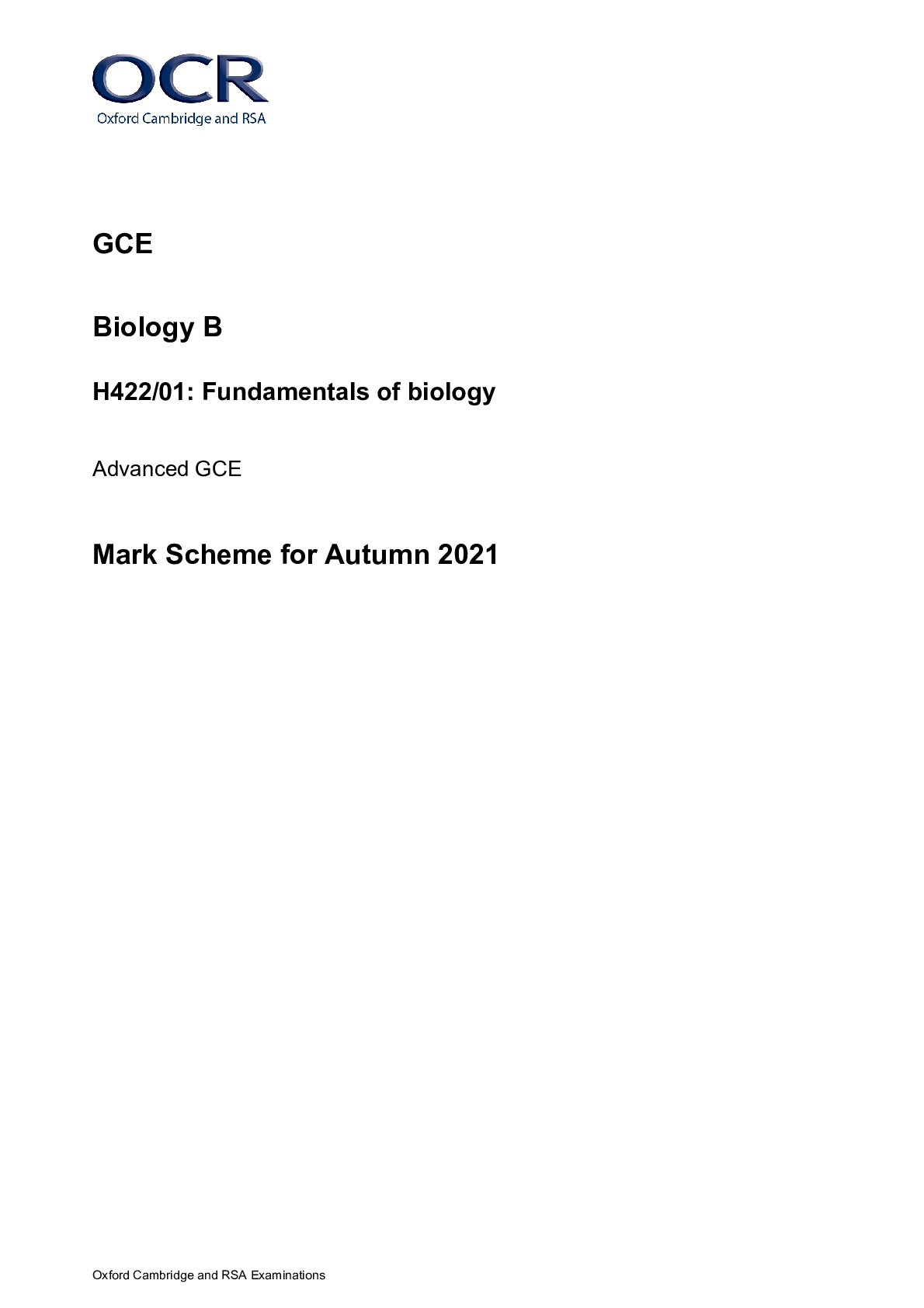
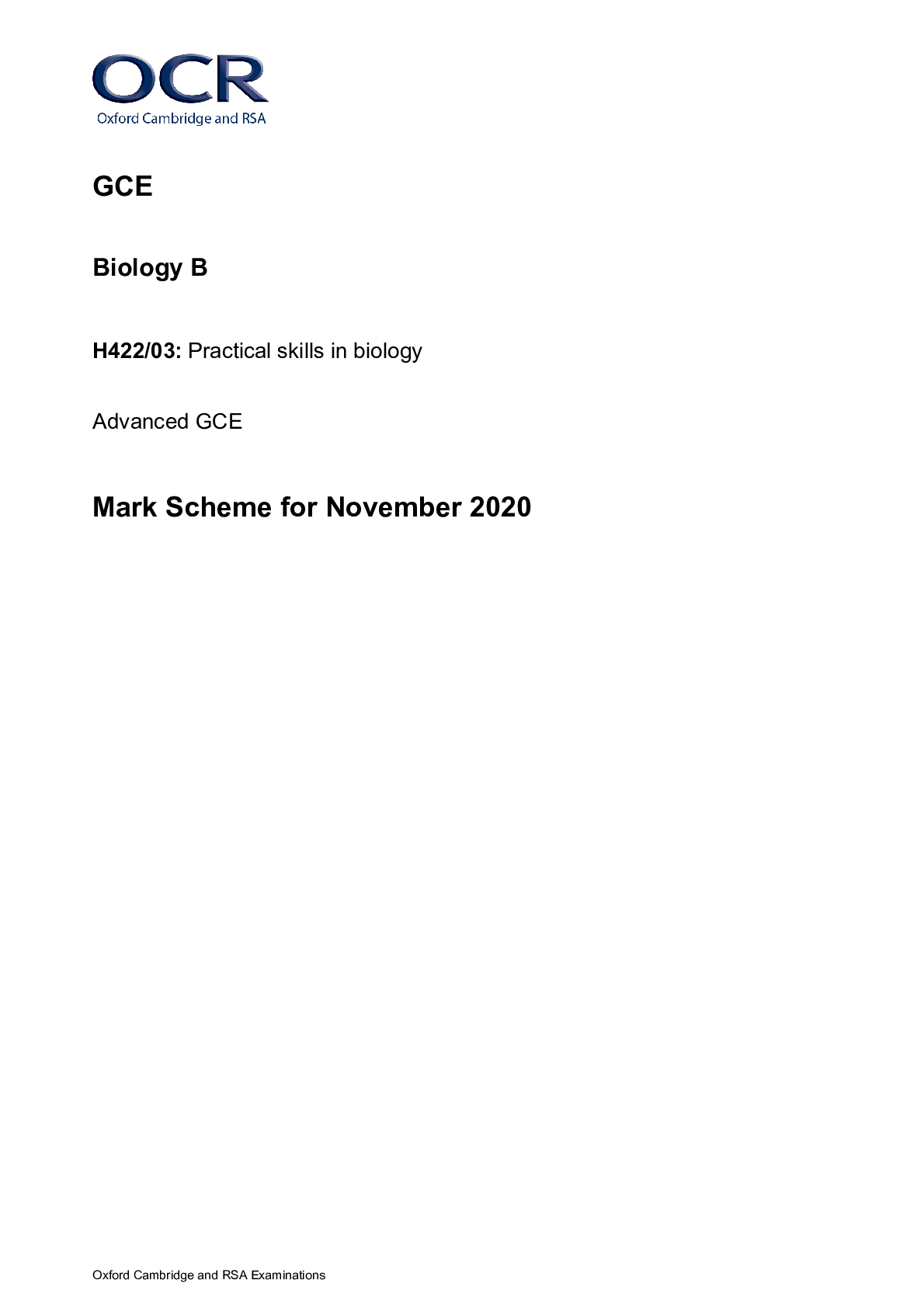
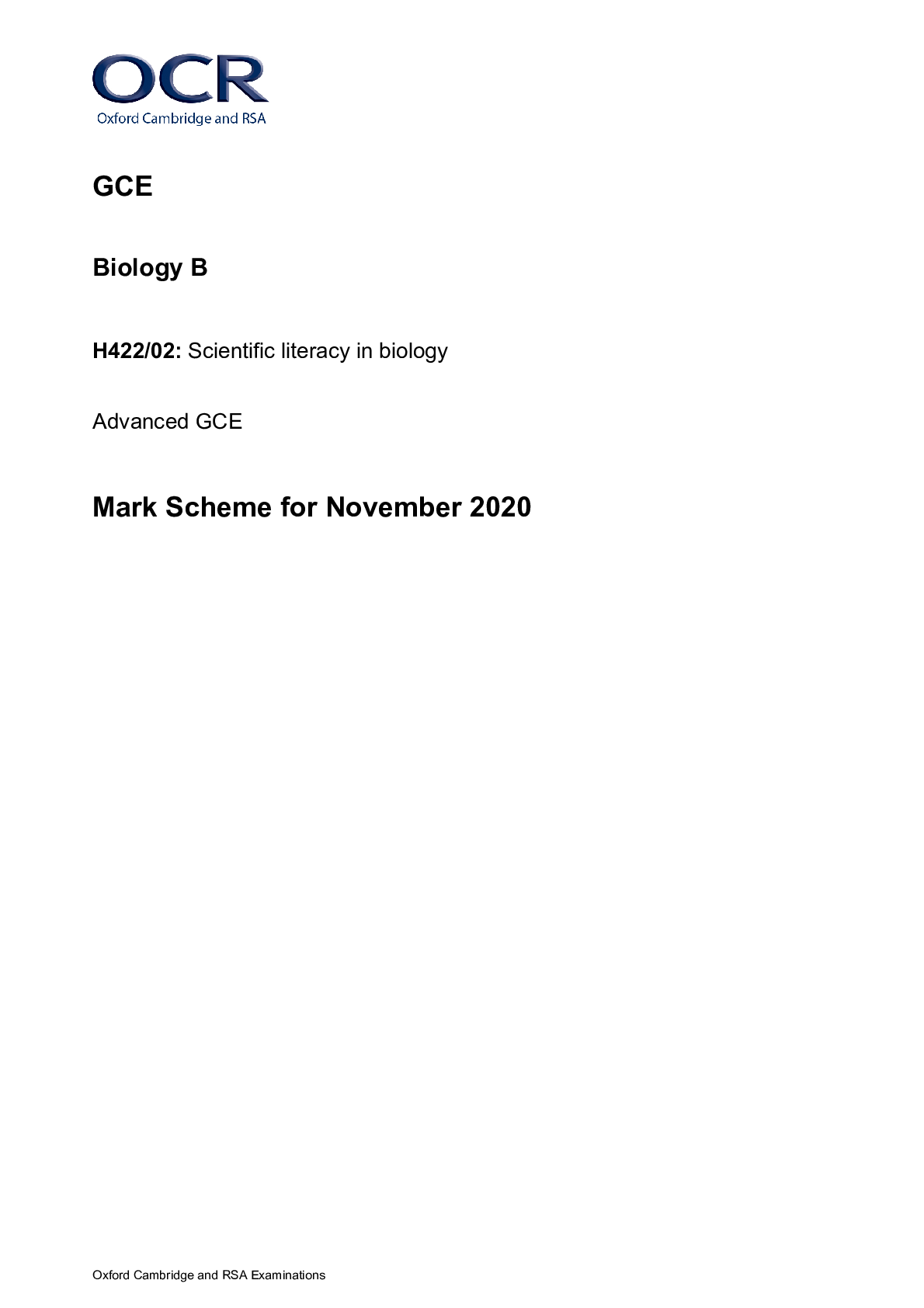
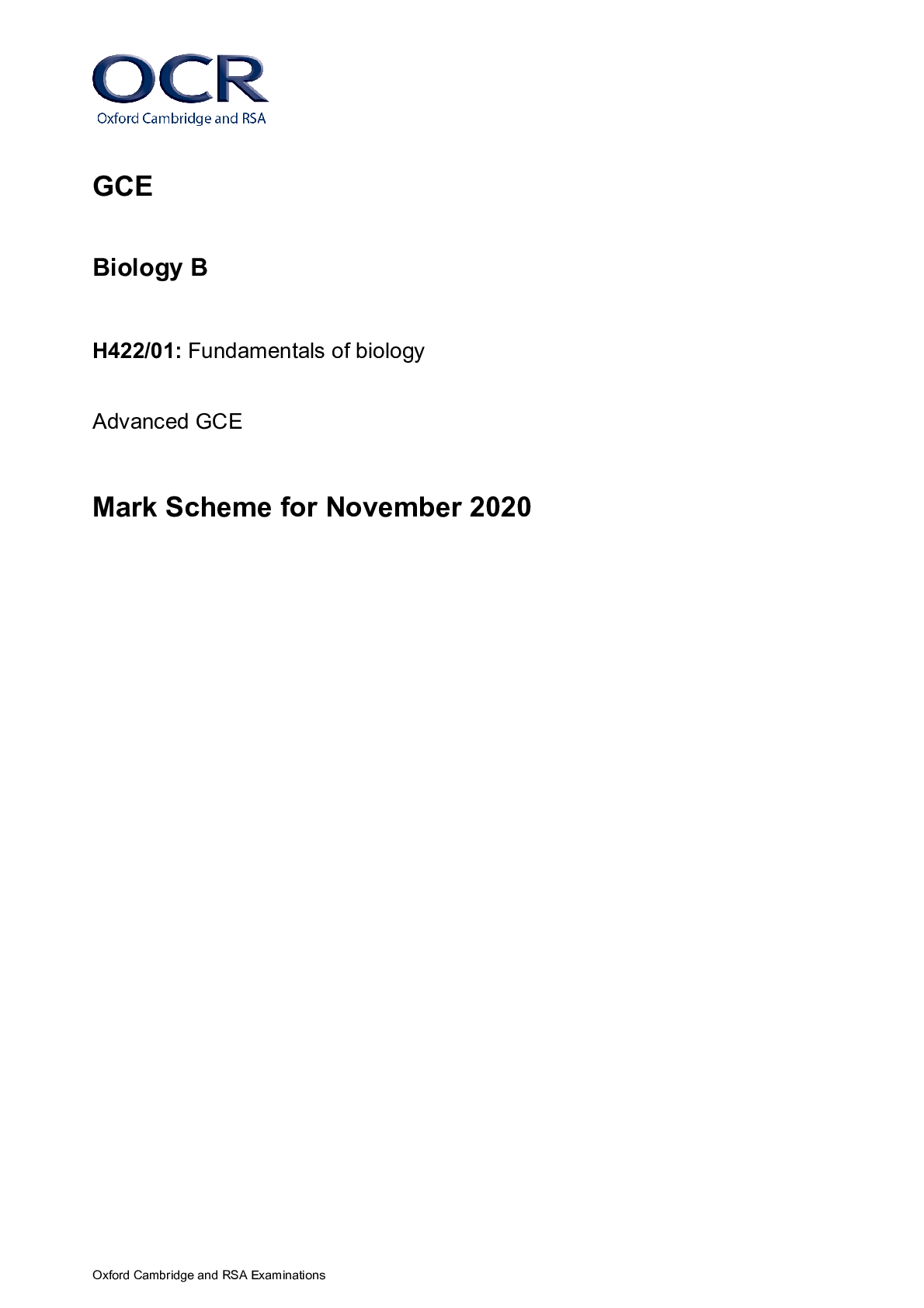

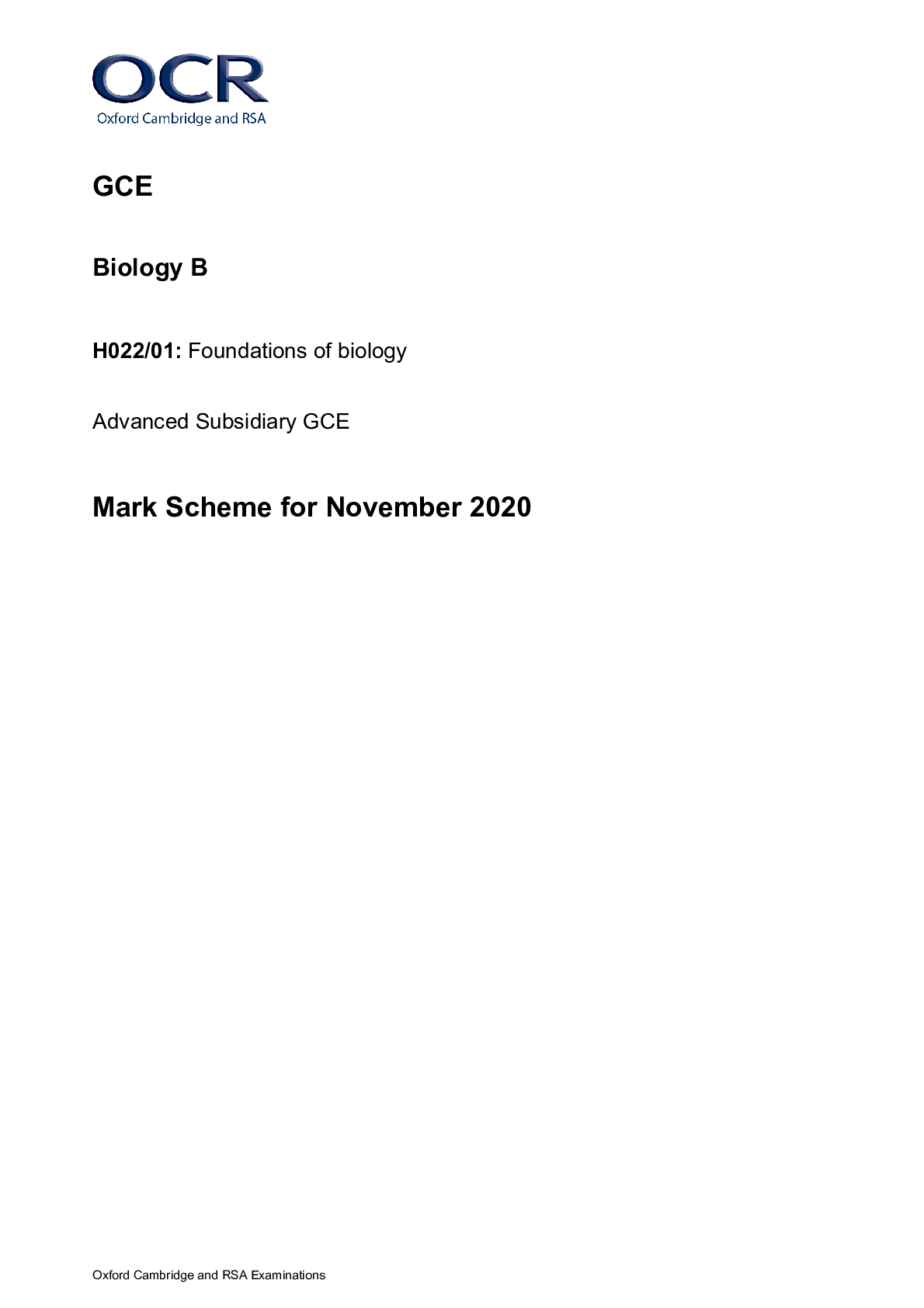
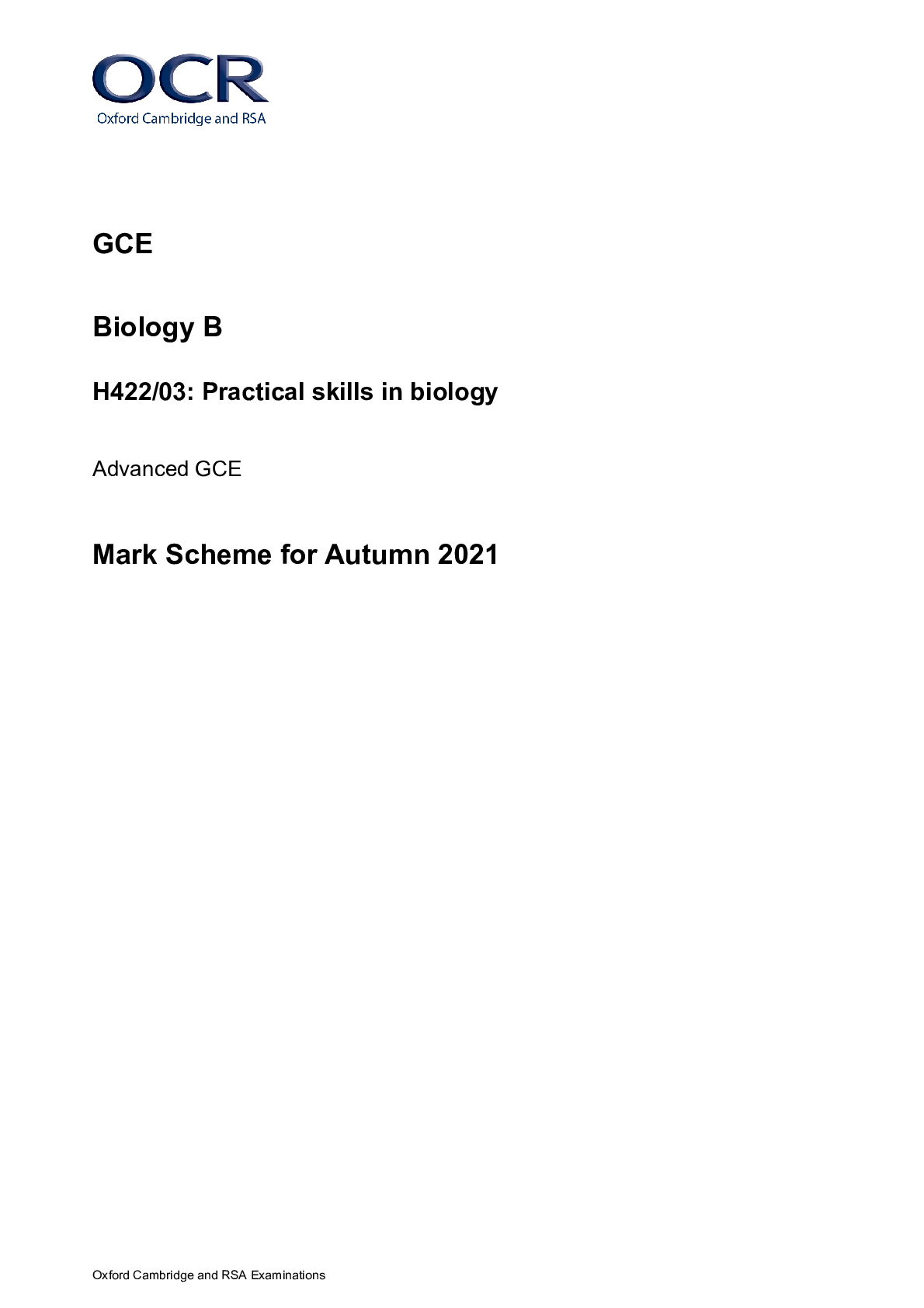
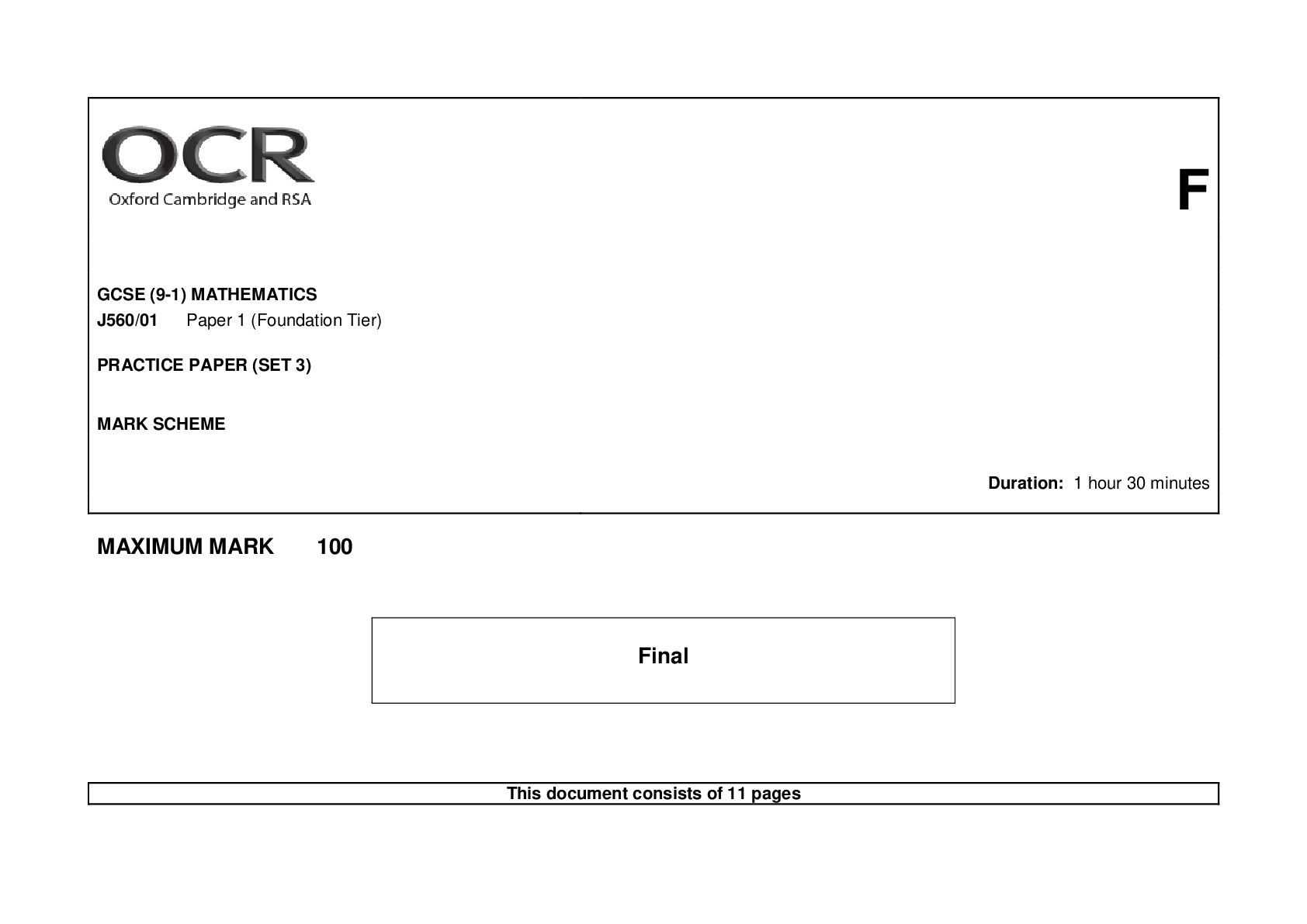
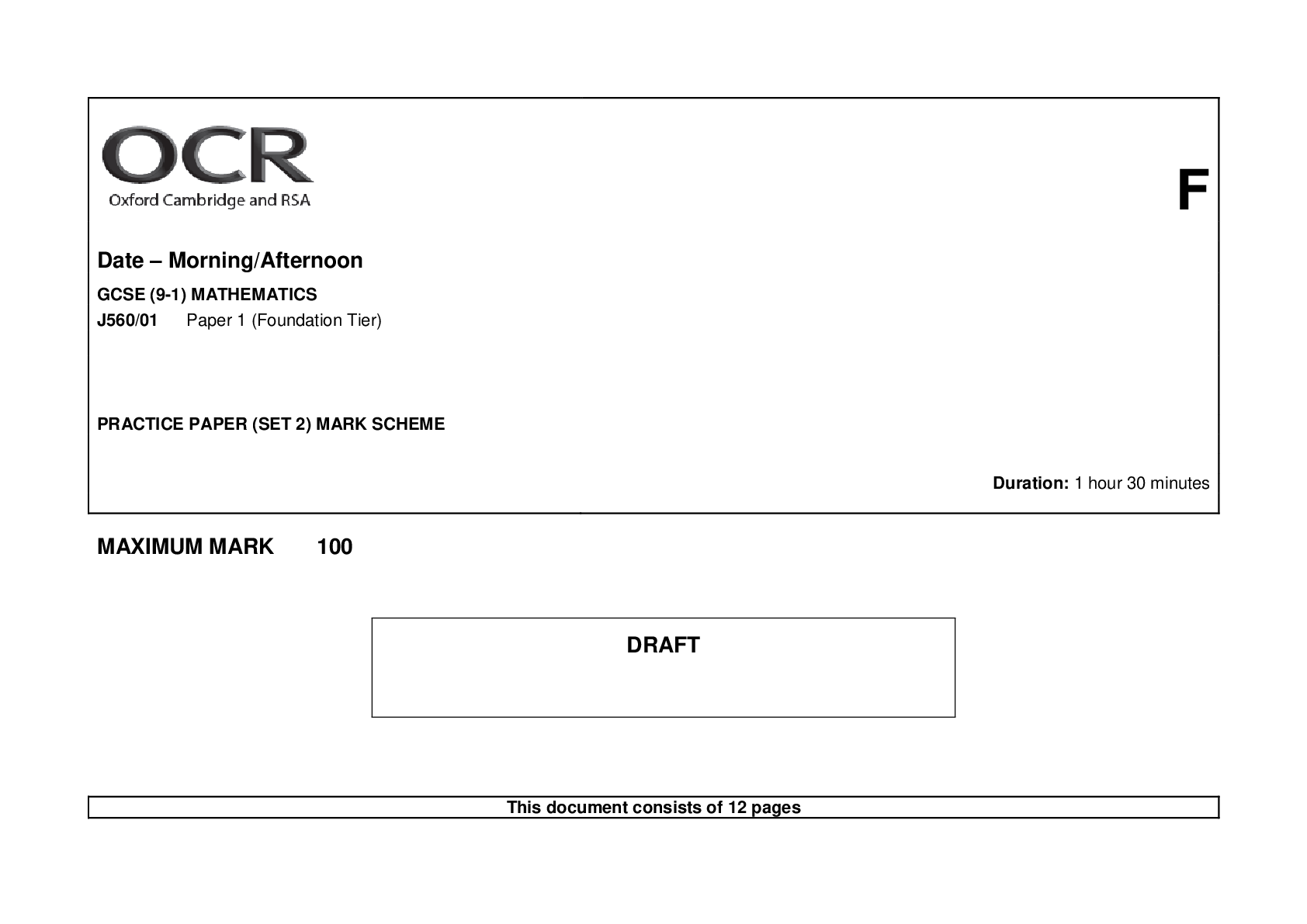
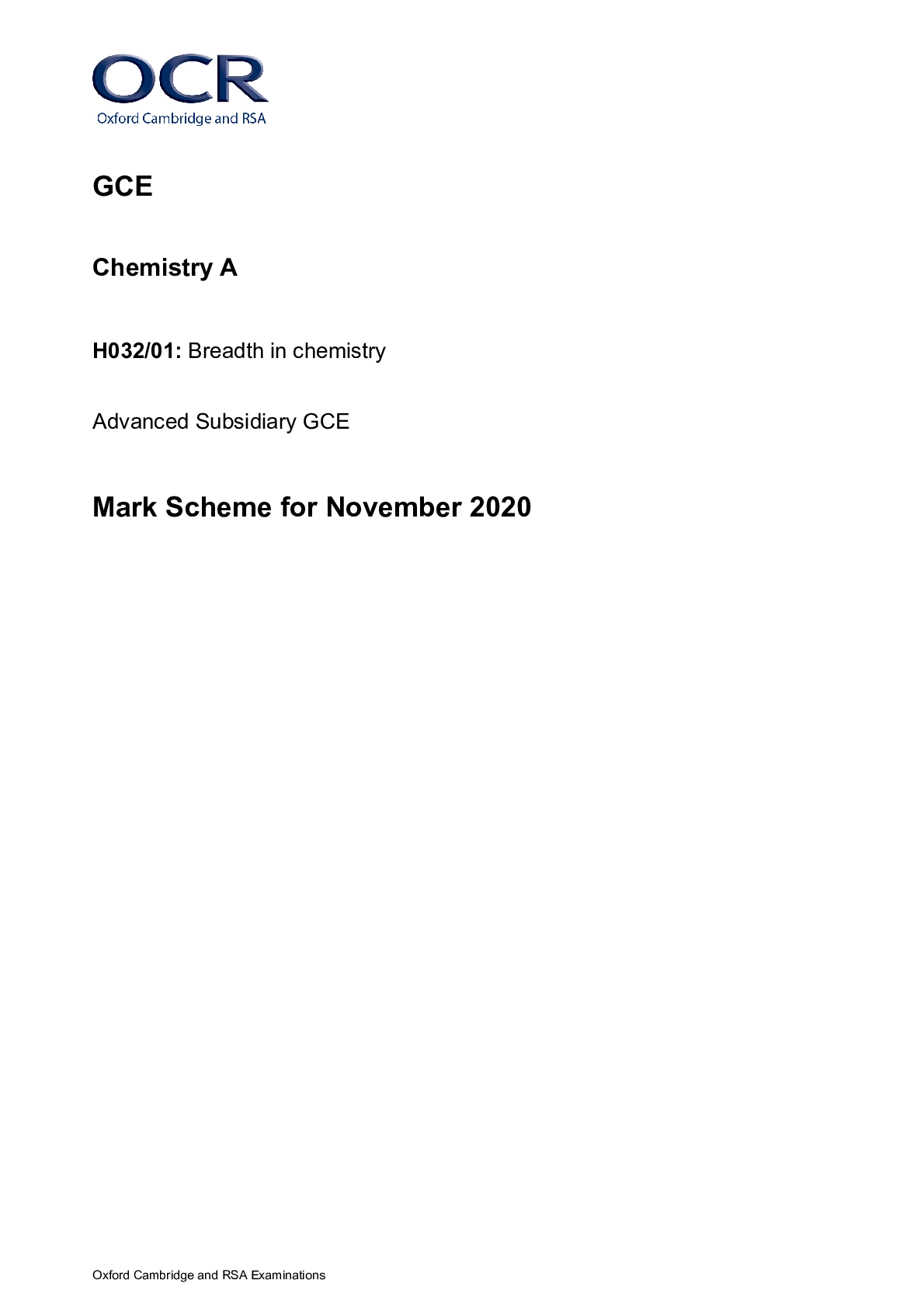

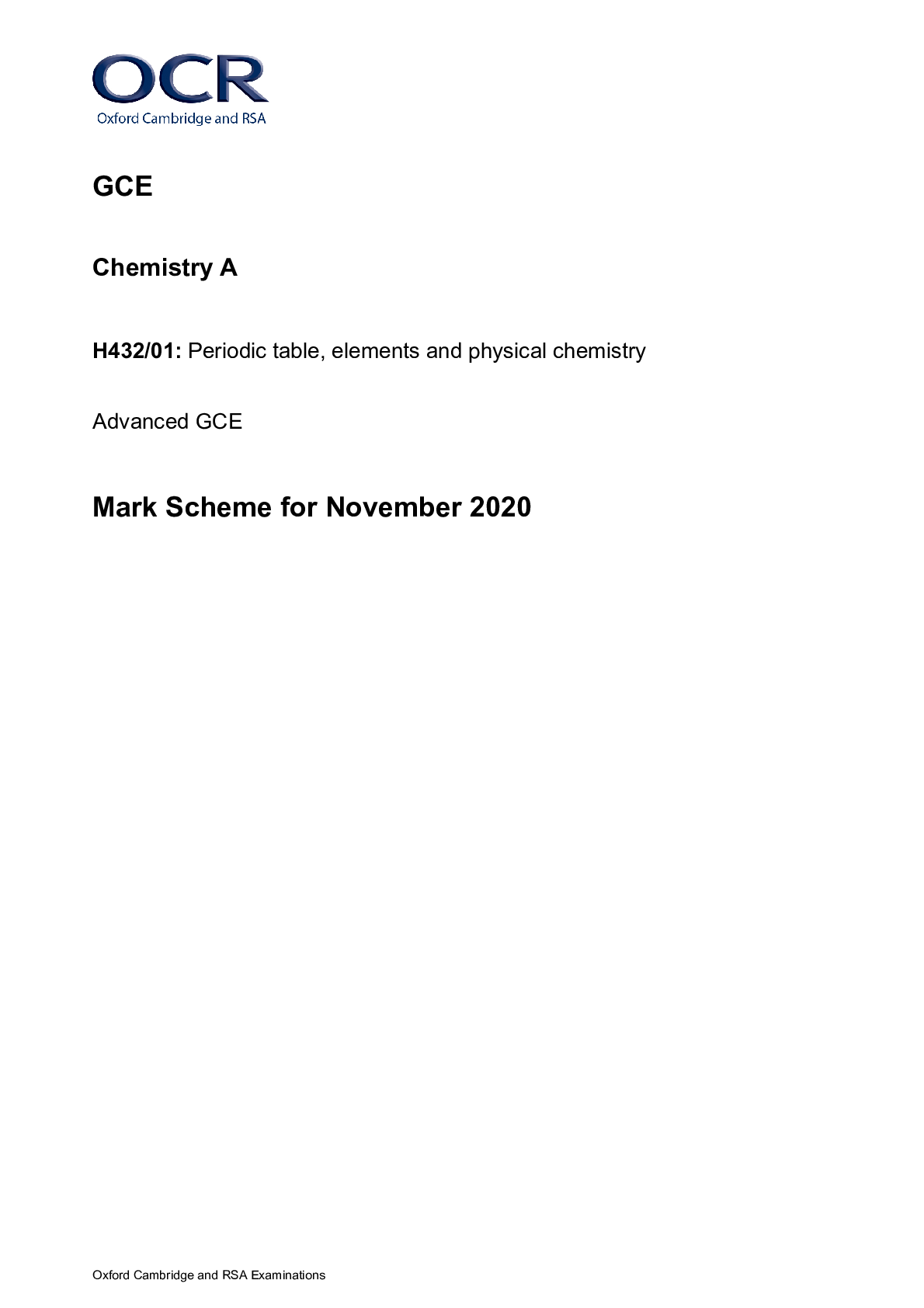
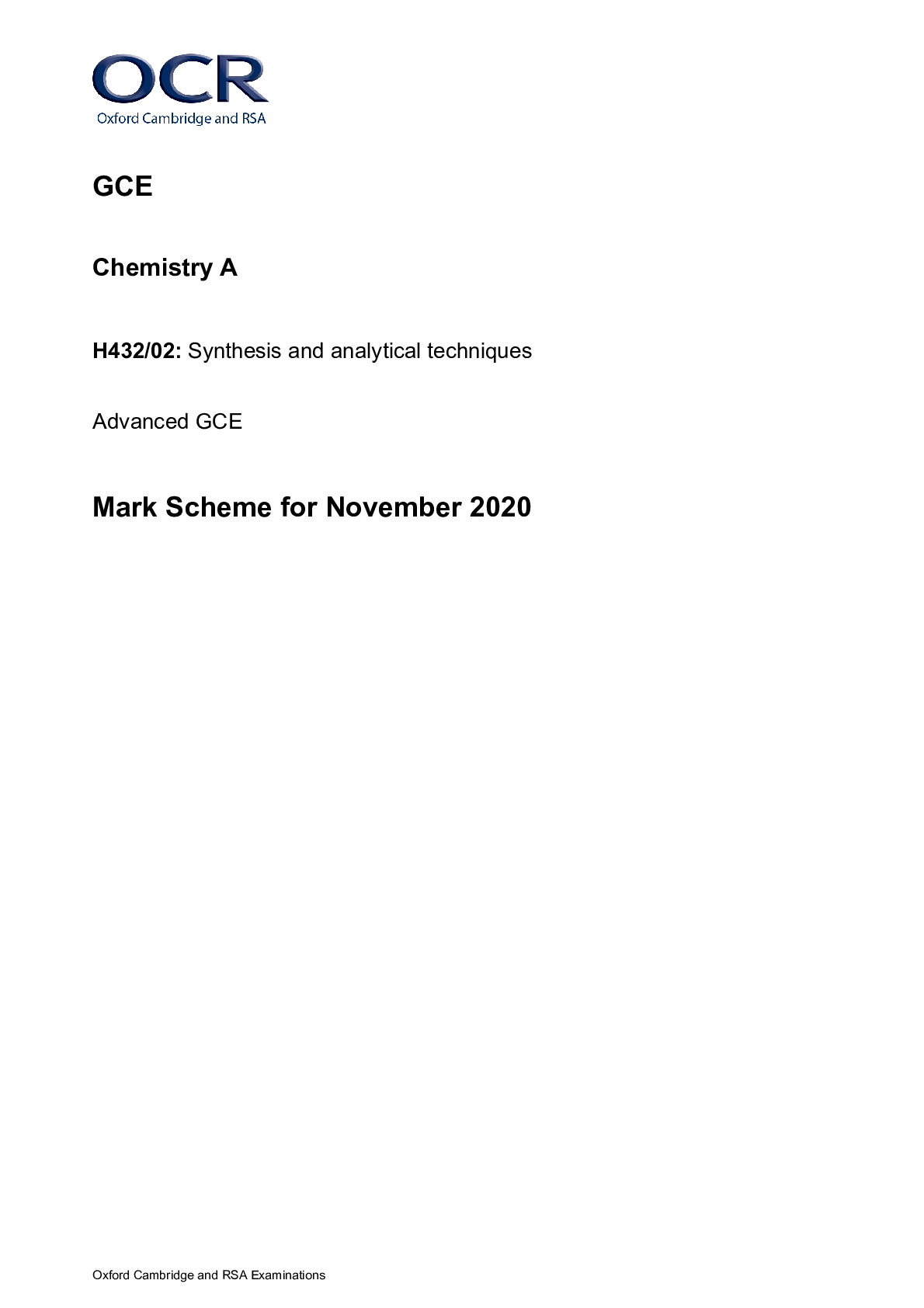

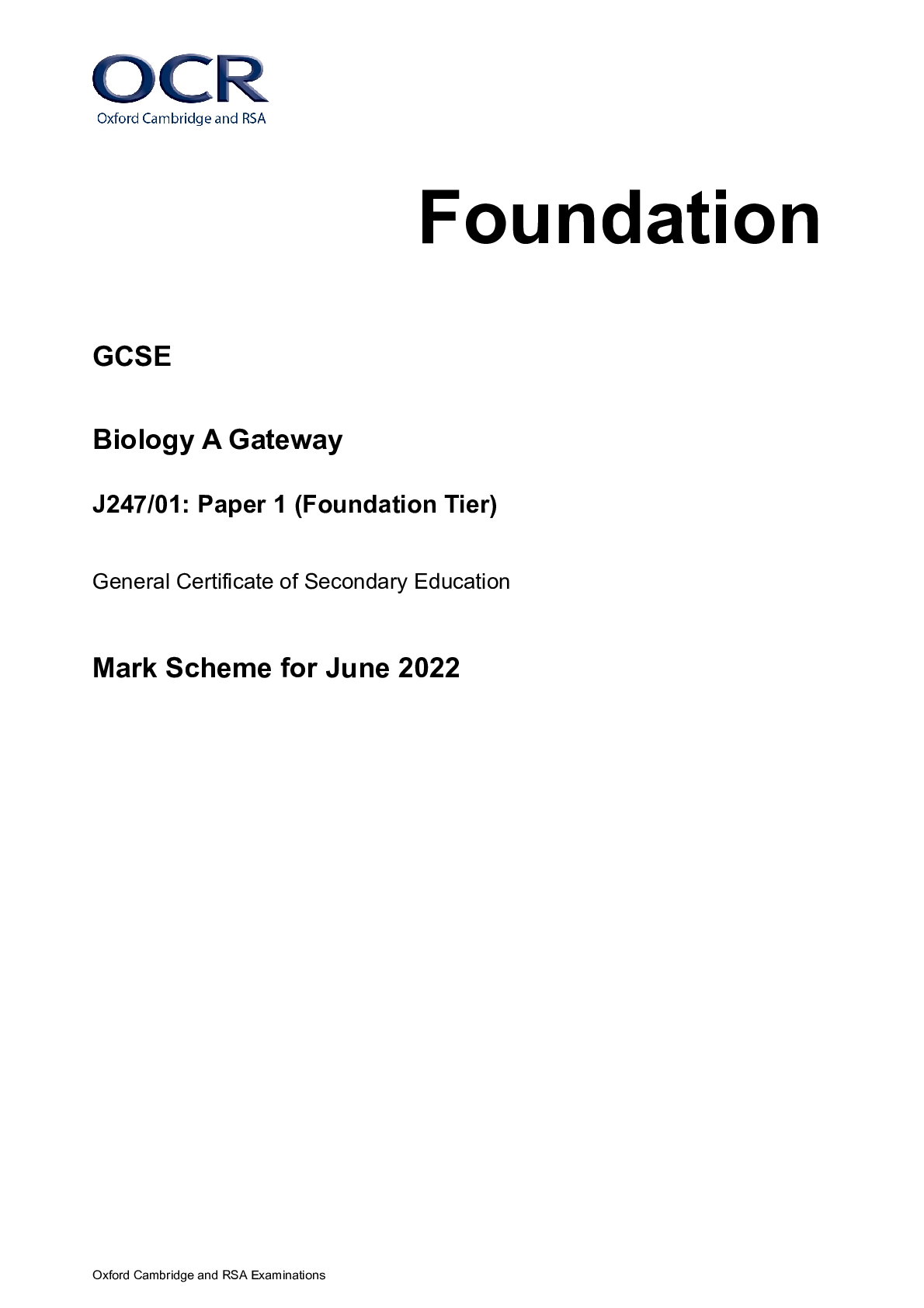

.png)

